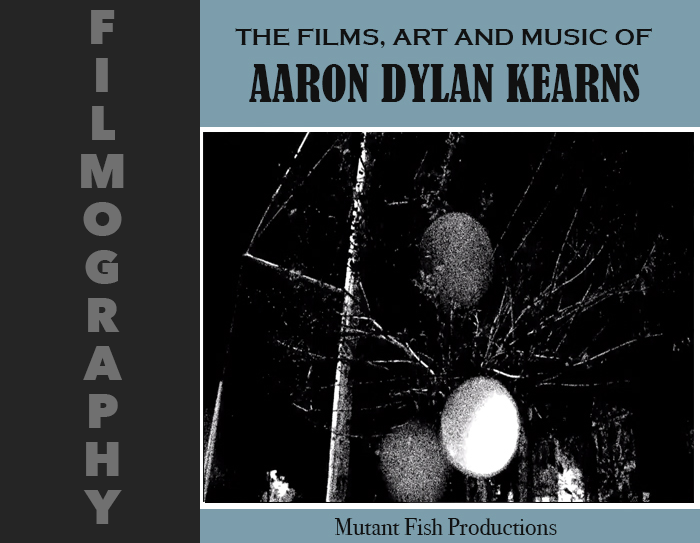Director, cinematography, editing, and music: Aaron Dylan Kearns
Genre: Experimental
Runtime: 1:11
Budget: $0
Release Date: November 29, 2017
The Thinklematter Visual (TV) series is, in concept, a multi part instillation of multiple minute long short films. The films are meant to be projected in a box-like room with plain walls, with each entry of the series being played simultaneously on each wall of the room, including the floor and ceiling. The number of shorts in the series is indefinite.
Watching Thinklematter Visual (TV): 2
Commentary by JMK
This work opens with an open airy soundscape, a drawing of leaves, then the sound of something akin to gurgling water enters as we shift to the movie proper, and the soundscape becomes even more active, circular, whirring, as we now see the backscatter of particulates in the night air against trees. These, I know, are actually collaged against the landscape. They move about actively, their numbers changing, then we realize that we are seeing in the seeming backscatter yet another collaged image of vertical bars of gradations of dark and light, just before the film cuts to a landscape that includes dark bars separated by thin slashes of light. There is a flutter in the soundscape, then the center orb, in which we had been viewing another collaged image, disappears, seemingly reappears as a bright light, then quickly moves off left screen. Immediately, more orbs enter from the right, one of which takes its place occupying the center screen. As it wanders, the landscape changes again, and the bright light of another orb enters center screen. The camera, which had been mostly static, suddenly zooms in as several other active orbs appear, then suddenly we are out, circulated back to the opening image of the two leaves against a background thick with small black dots against a field of white.
Called backscatter, orbs are typically unfocused particulates in the foreground brightly highlighted by a flash in low-light photography, but can also be artifacts, such as dust, on a lens. The liveliness of these in the movie, the manner in which they behave, in a matter of seconds confers upon them intentionality in what is largely an abstract space, despite each landscape being relatively easy to identify: trees, buildings. In early internet days,, orbs in photos were sometimes interpreted as records of paranormal presences, such as spirits. Ghost hunters and investigators of the paranormal would post photos of such orbs in graveyards or supposedly haunted buildings and suggest these were ghosts. The orbs act as will-o'--the-wisps, the activity of which have a number of folk loric explanations, and various natural as well. One could interpret the film as butting up against the will-o'-the-wisp lore and playing with it. But if that is, in part, the film's intention, it merges with abstractions that have taken on an air of intentionality, so that the orbs are emptied of the prospective personalities of paranormal forces and are instead things that behave as if with intention--actually, nothing less than art that is moving with intention, which is the nature of film, but becomes dramatically refocused upon by means of these orbs. A viewer tends to forget that film can be "moving" art: objects and positive and negative fields. The orbs bring this into the foreground, then even as the camera zooms in the meditation is suddenly over. The orbs are gone. The will-o'-the-wisp has fled as we drew in closer to it. Enough has been given to reflect upon. The movie ends.


